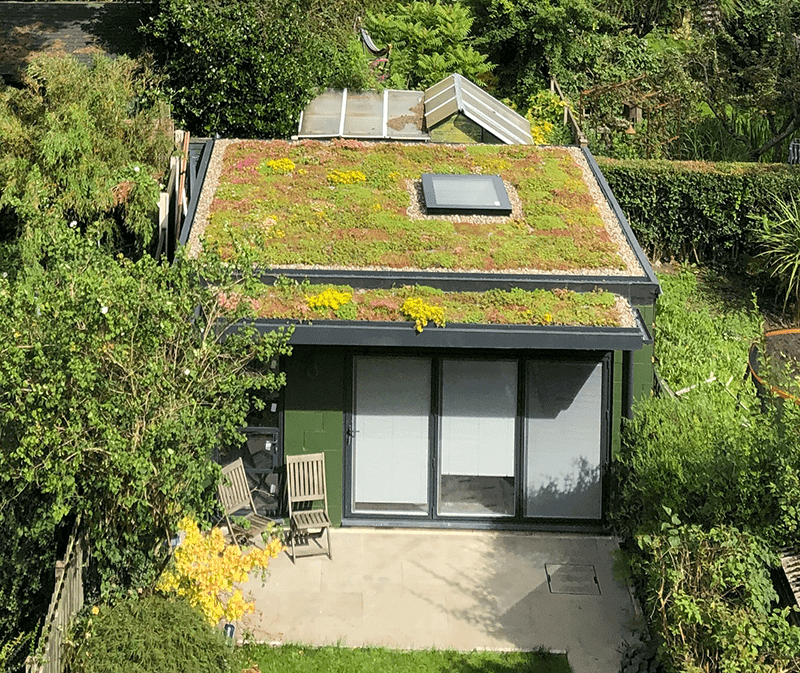
There are three main types of green roof systems.
1. Extensive "green roof" systems.
Extensive "green roof" systems have a thin ground cover. Sedum, algae, grass, grass and plants that require little or no maintenance can be planted. It is considered a relatively light system. Extensive systems can play a protective role on the waterproofing membrane and reduce water leakage. It is necessary to maintain and fertilize twice a year (spring and autumn) to keep the system well and not to damage the cover. Depending on the climate, irrigation should be applied. Walking on it is not recommended.
2. Intensive "green roof" systems.
Intensive "green roof" systems have a thicker soil layer (more than 15 cm). Grass, shrubs and small trees can be planted on this system. For these systems, the roofs of buildings need additional reinforcement. The depth of the soil and the type of irrigation system are selected according to the type of plant to be planted. These types of systems can be walked on, and even small weight installations can be applied.
3. Mixed "green roof" systems. These systems consist of the application of Intensive and Extensive systems together in one area, combining the features of both systems.
Economic benefits:
• Increases space used in buildings.
• Extends the life of heat and water insulation on the roof of the building.
• Helps keep buildings cool in summer and warm in winter.
• Reduces noise pollution.
• Green roof systems not only look great, but also absorb rainwater, provide thermal insulation and save energy.
• Provides a beautiful environment, healthy life.
Environmental benefits:
• Prevents urban concreting.
• Plays the role of shelter for animals.
• Leakage prevents sudden accumulation of rainwater.
• Causes humidity in dry weather.
• Reduces air pollution.
• Cleans air by attracting aerosols.
• Enriches the environment with oxygen.